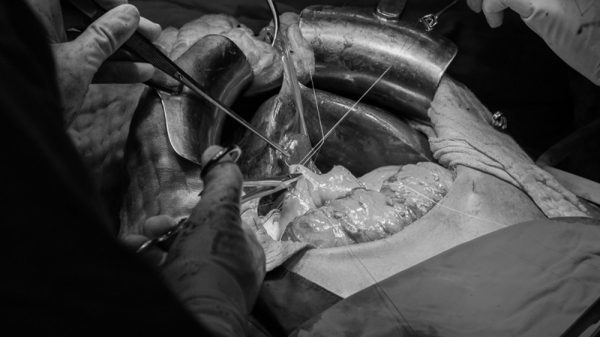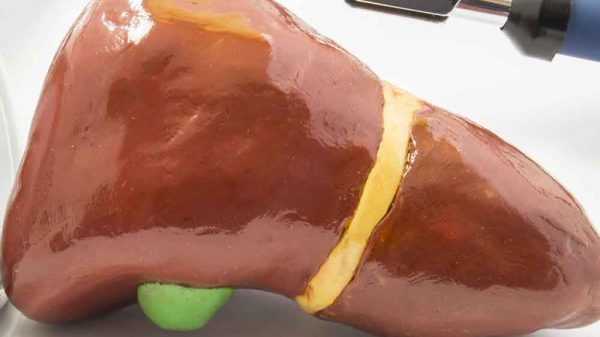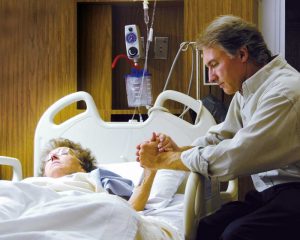Have you been diagnosed with liver cirrhosis? This is a serious disease that involves the vital organ having more scar tissue than healthy tissue. The liver disease itself has four stages that range from inflammation to liver failure. It’s important to know these four stages, which include cirrhosis (stage 3). In this situation, it is heavily scarred, which affects several functions. It’s important to try and prevent the disease from progressing to the next stage. However, there are also four stages of cirrhosis of the liver, which includes stage 4 liver cirrhosis life expectancy. Fatty liver disease (FLD) often doesn’t have any symptoms, but cirrhosis can include several complications that affect the patient’s physical, mental, and emotional health.
Liver cirrhosis is a very serious stage that should be managed carefully. In this situation, there’s a sky-high amount of liver scarring. This is actually the liver’s way to protect itself from further damage. However, in the process, it affects some of the liver’s functions including vitamin absorption and toxin detox. There are various possible complications like fluid buildup in the abdomen and confusion due to a mental condition known as HE. If you’ve reached stage 4 of liver cirrhosis then it’s critical to know how to slow down further damage and the average life expectancy for end-age liver cirrhosis.
What in the World Is Liver Cirrhosis?
Cirrhosis of the liver involves heavy scarring of the vital organ. The four stages of the serious disease include:
- Stage 1: Inflammation
- Stage 2: Fibrosis (Scarring)
- Stage 3: Cirrhosis
- Stage 4: Liver Failure
Before patients actually get the fatty liver disease (FLD) they’ll experience something called fatty liver. This is quite common. In fact, it’s estimated up to 100% of heavy alcohol drinkers have this condition. However, if fat buildup in the liver continues it develops into FLD.
Many liver disease patients also get something called Liver Hepatitis. This technically isn’t a “stage” of the disease because some people go from FLD to cirrhosis. So it’s better to talk about the amount of scarring that takes place.
There’s a difference between Stage 1, which is basically a severe case of fatty liver. However, it’s quite a different story when the liver starts experiencing fibrosis/scarring. This is the body’s way of protecting itself. It’s sort of like natural skin tanning, which helps to prevent sunburns and skin cancer over time.
However, there’s a big difference between Stage 2 and Stage 3 of liver disease. If you develop cirrhosis it involves major damage to the liver. The main difference is liver function is affected. There are various causes of cirrhosis. It’s often linked to heavy drinking, although there are other causes including Hepatitis and others.
While earlier stages of liver disease can be “reversed,” that’s not the case of cirrhosis. The only “cure” is a liver transplant, which can cost over $500,000 and cause other challenges like finding a donor.
Cirrhosis of the liver can cause various symptoms. Some of the main ones include nausea, vomiting, stomach pain, jaundice (yellowish skin/eyes), fatigue, weight loss, spiderweb-like veins, and low sex drive.
These symptoms often aren’t present during the disease’s earlier studies. If you experience several it’s important to get a checkup/tests from your doctor.
Stage 4 Liver Cirrhosis: Life Expectancy
If you have late-stage cirrhosis then you’ll need to get a MELD score. This not only helps to determine your likely life expectancy but also where you rank on the waitlist for a liver transplant. The MELD score helps to determine the chance of your life expectancy lasting 3+ months:
SCORE MORTALITY RISK (3 MONTHS)
- <9 2%
- 10–19 6%
- 20–29 20%
- 30–39 52%
- 40+ 71%
Like liver disease itself, there are 4 stages of cirrhosis.
- STAGE 1: This involves some liver scarring but there are also few symptoms. This type of cirrhosis is known as “compensated” cirrhosis since there are no complications involved in the disease.
- STAGE 2: This involves high blood pressure in the liver’s veins. Swollen veins known as “varices” also start developing.
- STAGE 3: This includes some new complications. They include abdominal swelling due to fluid buildup, and advanced liver scarring. This is known as “decompensated” cirrhosis.” That’s because there are major complications and the possibility of liver failure.
- STAGE 4: This can be very serious and involve end-stage liver disease (ESLD). This condition can be fatal if the patient doesn’t receive a transplant.
It’s important to know the various complications of liver cirrhosis. They start developing in Stage 3 and increase in number/severity during stage 4. They include:
HEPATITIS B/C
These are common infections that can result in cirrhosis. They can be passed on through sexual activity, drug use, etc. It’s important to use safe practices if you’re engaged in either or both. This will help to reduce your risk of these hepatitis strains. The symptoms can be tough to deal with besides the ones directly related to liver cirrhosis.
FATIGUE
These are conditions people often experience due to various reasons. Getting a few hours of sleep will always cause fatigue. However, if there doesn’t seem to be any reasonable explanation you might have liver cirrhosis.
More Signs of Liver Cirrhosis
ITCHY SKIN
There are 1001 causes of this condition including insect bites, poison ivy, and dry air. However, it’s also another possible sign of liver disease. If you have this condition and it’s long-term then you should definitely consider getting it checked out. It could be a serious health condition like liver disease.
WEAKNESS
Like fatigue, this is a common symptom that we often experience during life for various reasons. However, if it’s a contestant problem that’s not related to house/yard work or a gym workout, then there’s a good chance you might be experiencing a late-stage liver disease. It’s better to be on the safe side and schedule a doctor’s appointment.
LOSS OF APPETITE
This is another sign you might have cirrhosis of the liver. If your liver isn’t functioning properly the buildup of toxins might cause you to lose your appetite. If you don’t feel like eating most of the time then it’s a sign that something is wrong. Call, email, or text your doctor ASAP.
EASY CRUISING/BLEEDING
The operative word is “easy.” If these events happen often and there’s no clear explanation then you should visit your doctor. He/She will conduct an exam and order blood/imaging tests to check if there’s a chance you have liver cirrhosis.
JAUNDICE
This is a condition that can cause symptoms like yellowish skin/eyes. It’s caused by a buildup of fluid in the blood, which happens when the liver isn’t functioning properly. It’s a good idea to contact your doctor if you have this condition. There are various causes although the liver disease is one of the most common ones.
One of the main functions of the liver is to help with body detox. When it’s unable to function properly this can result in a buildup of toxins in the blood, brain, etc., which can affect stage 4 liver cirrhosis life expectancy.























